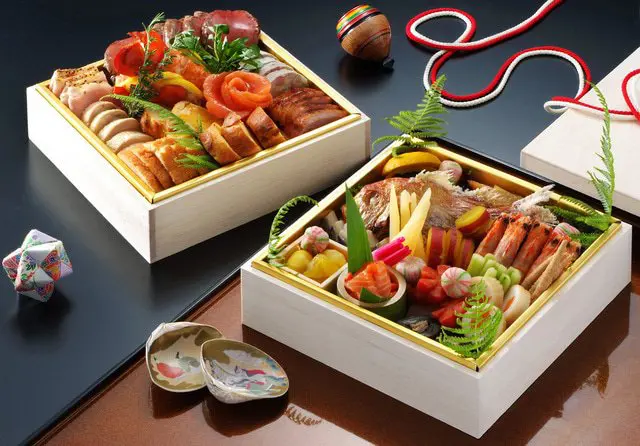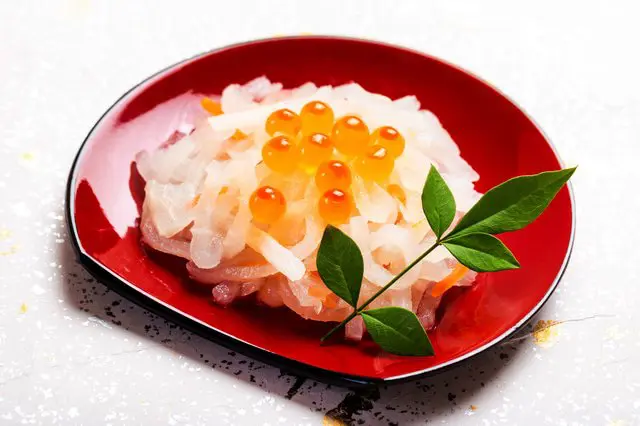Osechi - Traditional Japanese New Year's Cuisine

During the New Year holidays, the Japanese usually return to their hometowns and spend a few days celebrating and relaxing with their families. Osechi is the name of the traditional cuisine eaten at New year's but what makes up this intricate set of dishes?

Photo by Pixta
During the New Year holidays, the Japanese go back to their hometowns to spend time with their families. Traditionally, everyone eats osechi, a set of dishes with auspicious meanings.
What Is Osechi?
Osechi cuisine is prepared at the end of the year and eaten during the first three days of the New Year. Thus, it has to be made up of foods that can safely be eaten even a few days after being cooked.

Photo by Pixta
There are several theories surrounding the origin of osechi: "to prevent upsetting the god of fire on the first day of the year", "to avoid accidents during the new year", "to give people a break from constant cooking and household tasks", etc.
What’s in Osechi?

Photo by Pixta
The contents of osechi vary from community to community and even from family to family. Ever since the Meiji period (1868-1912), it has been common to use a set of square boxes to hold the osechi, however some families prefer to use large platters instead. Here are some of the most common osechi dishes across Japan.
Nishin - Herring Roe

Photo by Pixta
Nishin are salted herring roe. The word nishin can be written as "herring roe" or "both parents" depending on the kanji characters used, and as such, is meant to be a lucky dish that brings blessing of children to a family.
Kuromame - Black Beans

Photo by Pixta
Kuromame are boiled black beans that are sweet and soft. Beans originally have a meaning of healthy or robust, and nowadays are also a symbol of earnestness. These beans are eaten in hopes of being healthy throughout the year.
Gomame - Dried Anchovies

Photo by Pixta
Gomame are dried anchovies that have been simmered in a broth and seasoned with sugar and salt. In kanji characters, gomame is written as "making rice fields", because anchovies are often used as part of organic fertilizer for rice fields. Not only that, but anchovies' eyes ("me" in Japanese), look like sesame seeds ("goma" in Japanese).
Kurikinton - Mashed Sweet Potato with Chestnuts

Photo by Pixta
Kurikinton is mashed sweet potatoes with sweetened chestnuts ("kuri") in it. Kinton is Japanese for "gold dumpling" or "gold bedding", and is said to offer success in business when eaten at New Year's. Children love this dish too.
Kombumaki - Rolled Kelp and Anchovies

Photo by Pixta
Konbumaki are rolled kelp with anchovies, simmered in a stock with sugar and salt. Konbu kelp can also be pronounced kobu in Japanese, which when written with another character, is part of yorokobu, or "joy" - and signifies having a joyful new year.
Datemaki - Rolled Omelettes

Photo by Pixta
Datemaki are a rolled egg and fish cake dish made with sushi vinegar as well. Date means "stylish", and this dish is said to make your osechi look more splendid, but in the past, its scroll-like shape meant that it represented "wisdom" instead.
Kohaku Kamaboko - Fish Cakes

Photo by Pixta
Kamaboko is boiled fish paste, and because its shape resembles the rising sun, it is often a part of celebratory meals in Japan. Osechi kamaboko refer to the first sunrise of the new year in particular.
Red and white have been the colors of celebration in Japan since ancient times, with red symbolizing joy and protection, while white is a symbol of divinity and purity.
Boiled Shrimp

Photo by Pixta
The shape of a shrimp and its antenna are thought to symbolize longevity, as it can look like an old man with whiskers whose back is bent from old age.
Namasu - Pickled Carrots and Daikon Radish

Photo by Pixta
Namasu is ribbon sliced carrots and white radish pickled with vinegar - this dish is also red and white and said to be a symbol of celebration.
There are of course many other osechi dishes enjoyed on New Year's, far too many to fit all in a single article.
Ordering Take-Out Osechi
Although osechi was originally an entirely homemade dish, because of changing family patterns and lifestyles, it's now possible to order osechi made by department stores or famous restaurants too. If you want to guarantee your osechi order though, you should order early, usually in the end of November. Or, if you're staying at a hotel that provides breakfast, you might be able to enjoy some original osechi dishes as well.
If you are spending the New Year in Japan, why not try and experience different osechi dishes in different regions?
photos by PIXTA
































![[Northern Okinawa] 4 Recommended Cosmos Fields in Okinawa | Sunflowers and Cherry Blossoms in the Same Season!](https://resources.matcha-jp.com/resize/720x2000/2024/08/12-192028.webp)



![[Corporate Visit List] Near Kansai Airport! Discover Japan’s Technology and Business Philosophy through Industrial Tourism](https://resources.matcha-jp.com/resize/720x2000/2024/12/13-215168.webp)